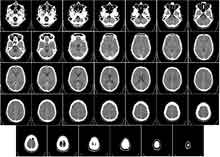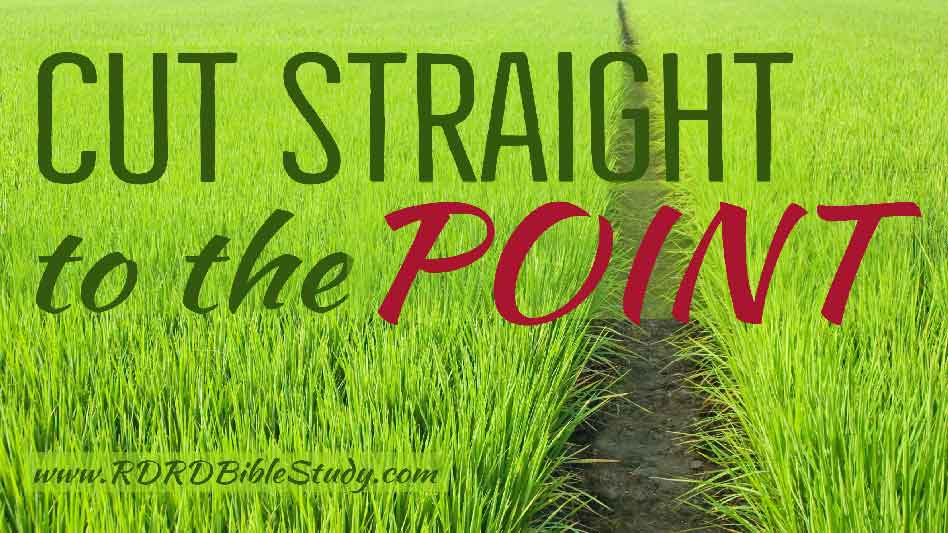Scissors cutting grass may seem like an unrelated image for a blog about Bible study. It may even appear to be one of those pre-fab photos that comes in a new picture frame. Then again, maybe you didn’t give it two thoughts? Or maybe your mind went somewhere else? Like… scissors would get dull from cutting grass? Or that you are thankful for a lawn mower?
Well… Believe it or not, I searched high and low for this particular image. It conveys, literally and symbolically, the answer to the question ‘What Did Paul Mean By “Rightly Dividing”?.’ The term “rightly dividing” comes from this familiar verse:
Study to shew thyself approved unto God, a workman that needeth not to be ashamed, rightly dividing the word of truth (2 Tim. 2:15, KJV)
Translation Circa 1611
Some phrases cannot be expressed any more beautifully than the rhythmic voice given them by the translators of the 1611 King James Version. “Rightly dividing” is one of those phrases. The New King James Version (NKJV) chose to keep the phrase, though other modern translations have tweaked it a bit:
ESV – rightly handling
NLT – correctly explains
NIV – correctly handles
NRS – rightly explaining
TNT – dividing justly
NAS – handling accurately
Literal Meaning of Rightly Dividing – “Straight Cut”
“Rightly dividing” is translated from the Greek compound word óρθοτομéω (pronounced orthah-tah-meh-oh). This word is used only once in the NT and twice in the Greek OT.
Look at the transliteration – orthotomeo
Immediately you see some familiar root words that provide clues as to why modern translators have rendered the English with varying yet similar phrases. Let’s break down the parts:
Ortho – orthodoxy, as in right teaching; orthodontic, as in straight teeth, more specifically, correcting or making teeth straight;
Tomography scans
Tomeo – to cut; the root “tom” relates to cutting or dividing, as in tomahawk; appendectomy and tonsillectomy both referring to cutting away; dichotomy as in dividing; tomography as in imaging by sections through the use of a penetrating wave.
Compound words are very common in Greek (more to come). Looking at the definition of the pieces and parts of Greek compounds is a way to understand the word more fully. (btw – In a full-blown word study, the word under investigation is normally researched first, then words from the same family, i.e. cognates. However, since we are still early in Rightly Dividing Rightly Dividing, and since we are investigating the blog’s namesake phrase “Rightly Dividing”, I chose to look at the root words first.)
Greek Lexicons
Here are two definitions of orthotomeo from Greek lexicons accessed in BibleWorks™ software:
ANLEX (Analytical Lexicon of the New Testament)
óρθοτομéω – “literally, as cutting a straight road through difficult terrain make a straight path; figuratively in the NT, with reference to correctly following and teaching God’s message; hold to a straight course, teach accurately (2T 2.15)”
BDAG (Bauer, Danker, Arndt, and Gingrich Greek-English Lexicon of the New Testament)
óρθοτομéω – “found elsewh. independently of the NT only Pr 3:6; 11:5, where it is used w. o`dou,j [way, road, journey] and plainly means ‘cut a path in a straight direction’ or ‘cut a road across country (that is forested or otherwise difficult to pass through) in a straight direction’, so that the traveler may go directly to his destination…” Then [cutting straight to the word of truth] would prob. mean guide the word of truth along a straight path (like a road that goes straight to its goal), without being turned aside by wordy debates or impious talk 2 Ti 2:15”
Other uses of the word (in the Greek OT) as noted in BDAG
Proverbs 3:6
(ESV) In all your ways acknowledge him, and he will make straight your paths.
(KJV) In all thy ways acknowledge him, and he shall direct thy paths.
Proverbs 11:5
(ESV) The righteousness of the blameless keeps his way straight, but the wicked falls by his own wickedness.
(KJV) The righteousness of the perfect shall direct his way: but the wicked shall fall by his own wickedness.
Both of these proverbs use the word in context of a path. This is possibly how the word was used in common vernacular during Paul’s time. Both refer to some type of guidance (acknowledging God, living according to righteousness), that is the catalyst or driving force that is leading, correcting, or maintaining (make, keep) a certain course (path, way) in a straight, forward-moving direction.
Context Of 2 Timothy
Following the rule “A text without a context is a pretext to a prooftext” provides guidance in determining the meaning of a word. If you were doing an in-depth study of a 2 Timothy passage, you would have a lot of information related to the historical, literary, and theological contexts. For our purposes here, let’s focus on three main facts about 2 Timothy’s context:
1) Paul is writing to Timothy (keep their relationship and history in mind).
2) 2 Timothy is generally believed to be Paul’s last letter. Paul believes he will die soon, so he is giving Timothy his dying words, what he deems of utmost importance—instructions for continuing the accurate preaching/teaching of the Gospel—which is the driving force of Paul’s life.
3) Paul warns against false teachers, including those who call themselves Christians, who have swerved from the truth (key word-truth, truth of the Gospel).
Multi-Level Meaning of Rightly Dividing
From this brief study of our word and the context of 2 Timothy, a clear, yet complex, meaning begins to emerge.
In a nutshell, rightly dividing means “cutting a clear path to the truth of God’s Word.”
Using the plain meanings defined by BDAG above, “cut a path in a straight direction or ‘cut a road across country (that is otherwise difficult to pass through) in a straight direction’, so that the traveler may go directly to his destination” AND applying these meanings to God’s Word, the nutshell meaning can be expanded to…
Expanded To…
(…take a deep breath) Explaining the truth of God’s Word, the truth of Christ, the truth of the Gospel, salvation, etc., can be difficult to understand (terrain that is forested or difficult to pass through) for a 1st century Jew or Gentile, and even more so for a 21st century non-believer.
So clear a path—a straight path—remove obstacles, cut away overgrowth, provide a path that is straight to the journey’s goal, make the Gospel teaching accessible to the hearer, plain, not confusing. Whether a person is teaching, preaching, writing, or just talking with another person, carefully explain the truth of Jesus Christ, straight to the point, so the hearer may go directly to his destination, i.e. hearing and believing the Gospel.
All that from “rightly dividing”! And BTW, this is a great example of both
- multi-layered word meanings (not multi meanings, but multi-layered meanings), and
- classic Paul, saying a lot with an economy of words
It is the Christian responsibility, both church and individual, to share the Gospel (Matt. 28:18-20; Romans 10:14-17), but it is not our responsibility to “make” someone believe the Gospel. That is the work of the Holy Spirit.
“Rightly Dividing” tells us how the truth is to be shared.
The first part of 2 Timothy 2:15 explains how to rightly divide: study to show yourself approved (KJV).
So, Why A Picture Of Scissors Cutting Grass?
Now do you understand the post image for “What Did Paul Mean By “Rightly Dividing?”
The compound word orthotomeo is associated with cutting a straight path through difficult terrain. Here is the breakdown of the image:
Grass – represents difficult terrain, i.e. thick, difficult to traverse or see a clear path ahead, etc.
Large hand holding the scissors – depending on how we look at the image, the hand could
a) belong to the person watching, or
b) the person could be watching the larger hand doing the work, or
c) both a and b.
Could letter c be the correct answer? Absolutely.
The large hand represents the mystery that God chooses to work through humans, i.e. an individual or church holds the scissors and appears to be doing the work. In reality, it is God guiding the hand, which is, of course, the much larger hand of God Himself at work.
Scissors – represents the precision necessary to cut a straight path to the truth, especially when that truth is surrounded by a lot of growth, not the least of which are things that look very similar. The scissors are effective bible study practices to cut a path that goes straight to its goal—teaching the truth of God’s Word.
Why 2 “Rightly Dividings” (RDRD) for a Blog Title?
Rightly Dividing is how to share the truth of God’s Word—correctly, plainly, rightly.
Rightly Dividing Rightly Dividing is how to study correctly, plainly, rightly, in order to share the truth of God’s Word correctly, plainly, rightly.
So perhaps the blog image is not so unrelated after all.
Your Turn (Not a Test)
A great way to learn (both recall and comprehension) is to summarize something you have just read–in your own words.
Without looking back at what you just read, if someone were to ask you to explain what “rightly dividing” in the context of Bible Study means, how would you answer? Leave a comment. I look forward to hearing from you.
Until next time…
The grace of the Lord Jesus Christ and the love of God and the fellowship of the Holy Spirit be with you all (2 Cor. 13:14).












